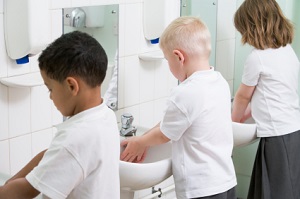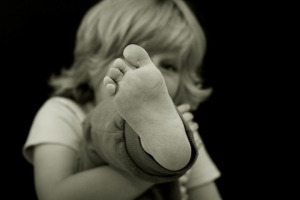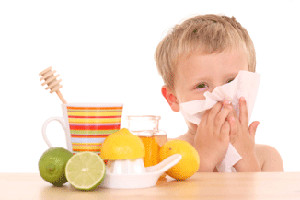How to squash those school bugs!
Hygiene 
Many illnesses and routine infections such as coughs and colds can be avoided through good personal hygiene. The importance of teaching your child basic hygiene routines to avoid the transmission of infection cannot be overstated. Encourage your child to wash their hand regularly with soap and water before meals and after visits to the bathroom. Where possible they should avoid sharing towels with other students.
Healthy Diet
A healthy diet can make all the difference in boosting your child’s immune system. It is important therefore to ensure that they have a balanced and varied lunch box .Sugary treats should only be rarely and sparingly included in lunch boxes because all they provide is empty calories. When it comes to choice of drink, from a dental health point of view the best options are water or milk.At times, it is difficult for Parents to know when to keep their child at home. The following ailments are the most common for pre school and school children. Advice from HSE.ie is useful for Parents when faced with making a decision to exclude their child from school or a visit to the GP!
Covid and Headcolds
Children CAN attend school with sneezing and a runny/blocked nose as long as there are no other symptoms and are otherwise well.
However, do not send your child to school or childcare if any of the following apply.
Your child has:
- a temperature of 38 degrees Celsius or more
- any other common symptoms of COVID-19 - a new cough, loss or changed sense of taste or smell, shortness of breath or an existing breathing condition that has recently become worse
- other uncommon symptoms of COVID-19, such as sore throat or headaches
- diarrhoea
- common symptoms of COVID-19
- other symptoms, such as sore throat or headaches
- diarrhoea
- an existing breathing condition that has recently become worse
- Stay out of school for the duration of symptoms and 48 hours post symptoms.
REMINDER: Children CAN attend school with sneezing and a runny/blocked nose as long as there are no other symptoms and are otherwise well.
Check out the HSE for more on Covid-19.
Conjunctivitis
Exclusion: Exclusion is not generally indicated but in circumstances where spread within the preschool or classroom is evident, it may be necessary to recommend exclusion of affected children until they recover.
Impetigo
Impetigo is a skin infection causing blisters, which become golden-crusted. It is mainly caused by bacteria known as staphylococci but may also be caused by streptococci. The fluid in the blister is very infectious, and spread occurs by hand-to hand contact with this fluid as the blister bursts. Good hygiene is essential to prevent spread. Treatment is usually by antibiotic cream and/or oral antibiotic medicine.
Exclusion:Until lesions are crusted and healed, or 24 hours after commencing antibiotics.
Hand, Foot and Mouth Disease 
This is generally a mild illness, caused by a type of virus known as enterovirus. The child develops a fever and rash with blisters, which appear especially in the mouth and on the hands
and feet. It is spread by direct contact with the secretions of the infected person and by coughing and sneezing. Younger children are more susceptible to infection due to close contact.
Exclusion: While the child is unwell he/she should be kept away from school/nursery. If evidence exists of transmission within the day centre exclusion of children until the spots have gone from their hands may be necessary.
Head Lice
Unfortunately the return to school is often shortly followed by an outbreak of headlice. You need to be vigilant and regularly check your child’s head for evidence of lice or eggs – watch out for scratching. Regularly wash and comb out your child’s hair with a nit comb to check for lice and eggs, Unfortunately head lice have become increasingly resistant to different insecticides with recent research estimating that four out of five had lice are now resistant to the treatment used to date.
A few new treatments have come on to the market recently so it is worth talking to your chemist for the most up-to-date advice. In any event, if you find the dreaded lice in your off-springs hair it is important to immediately inform your school so that other parents can be alerted to the need to check and treat their kids if necessary.
Exclusion: is unnecessary..
Chicken pox
The majority of children will have been through the chicken pox illness before they reach primary school – most having contracted it during their time in crèches or playschools. However there will still be a number of children who have been lucky enough to avoid the illness. It is important therefore that a child who contracts chicken pox is kept away from school until the illness passes so as to avoid passing it on to their class mates.
A child with chicken pox is infectious from two to four days before the rash first appears until all the spots have crusted over. The chicken pox illness usually lasts about two weeks.
Exclusion: Those with chickenpox should be excluded from school/nursery until scabs are dry; this is usually 5-7 days after the appearance of the rash.
Influenza 
Influenza is an acute infectious respiratory illness caused by the influenza virus. Influenza can occur throughout the year but usually peaks in winter. Influenza viruses infect the nose, throat and lungs.
The main symptoms are fever (temperature > 38.0C (100.40F), tiredness, chills, dry cough, sore throat, headache, muscle and joint pains.
Exclusion: Children with suspected or confirmed influenza should remain at home for 7 days from when their symptoms began. In general persons with flu are infectious for 3-5 days after symptoms begin but this may be up to a week or more in children. Children should not re-attend their childcare facility until they are feeling better and their temperature has returned to normal.
Scarlet Fever
These illnesses are caused by certain strains of streptococcus bacteria. These bacteria are common (most people will have them at some time in their lives) and cause a number of other diseases including sore throat and skin infections. Although earlier in the century scarlet fever was a dangerous disease, the strains of streptococcus responsible for it at present usually cause only a mild infection.
Stomach Bug or Gastroenteritis
This takes many forms, but the main symptoms are nausea, vomiting, diarrhoea and abdominal pain, which occur singly or in combination. The illness usually lasts only a short time. The common route of spread is by hand-to-mouth and the ingestion of infected foods or liquids. A variety of microorganisms cause illness in children, viruses but while the causes are varied, strict attention to personal hygiene is important to reduce the spread of disease. The common gastrointestinal germs are very infectious and for that reason children who have had diarrhoea should be excluded until 48 hours have elapsed since their last episode of diarrhoea.
Exclusion: Children who have had campylobacteriosis should be excluded until 48 hours after their first formed stool.
Slapped Cheek
This viral infection usually occurs in outbreaks every few years and small outbreaks are common in schools/nurseries. It is a mild illness caused by a virus known as parvovirus B19. A red rash appears on the face giving a ‘slapped cheek’ appearance and may also involve the legs and trunk. Often the child may have a runny nose and cough. Spread is mainly through infected secretions by coughing and sneezing. There is no specific treatment. A few children, but most adults, have mild joint pains.Exclusion: An affected child need not be excluded because he/she is no longer infectious by the time the rash occurs.
For more information and advice, see hse.ie.

No documents found